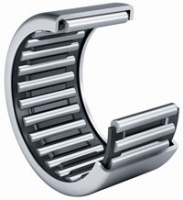Needle roller bearings: 60 years and still evolving
Whilst the basic design of a needle roller bearing hasn’t changed a great deal in the last 60 years, continuous developments have resulted in new cage designs that provide five times the service life and double the static load rating of their original counterparts.

Most design engineers will already be familiar with the technical advantages provided by a needle roller bearing – the ability to handle relatively high loads in a compact design envelope. This technical advantage has made the needle roller bearing the preferred choice of bearing in a wide variety of industrial and automotive power transmission applications over the years.
A needle roller bearing is a bearing that uses small cylindrical rollers. These rollers are used to reduce friction of a rotating surface. Compared to ball bearings, needle roller bearings have a large surface area that is in contact with the bearing raceway journals.
The typical structure of a needle roller bearing comprises an inner race (or sometimes just a shaft), a needle cage which orients and contains the needle rollers, the needle rollers themselves, and an outer raceway. There are many different designs of needle roller bearing, including drawn cup, precision race, caged roller, and thrust roller. Here, we consider the caged roller type.
Register now to continue reading
Thanks for visiting The Engineer. You’ve now reached your monthly limit of premium content. Register for free to unlock unlimited access to all of our premium content, as well as the latest technology news, industry opinion and special reports.
Benefits of registering
-
In-depth insights and coverage of key emerging trends
-
Unrestricted access to special reports throughout the year
-
Daily technology news delivered straight to your inbox










Water Sector Talent Exodus Could Cripple The Sector
One possible reform to the Asset Management Plan (AMP) system would be to stagger the five year cycle across the ten or so water businesses, so that...